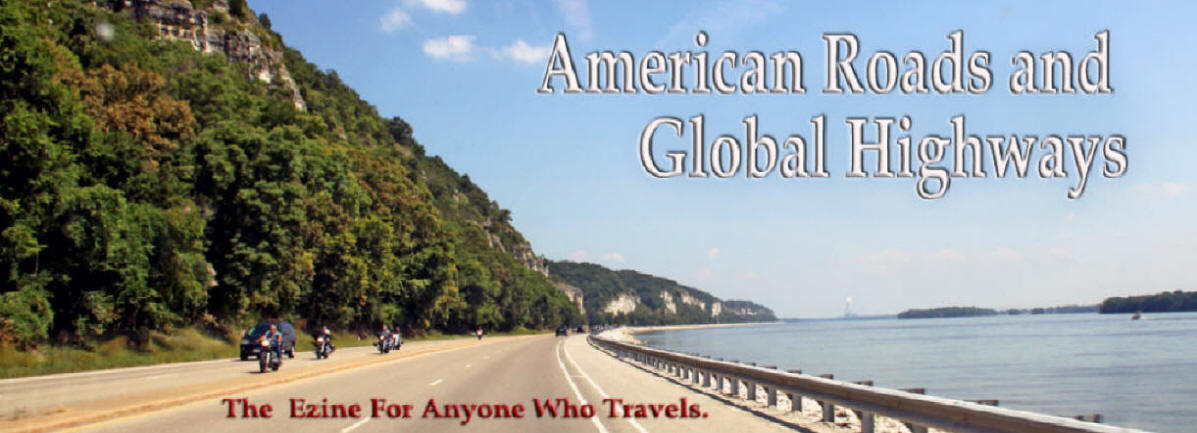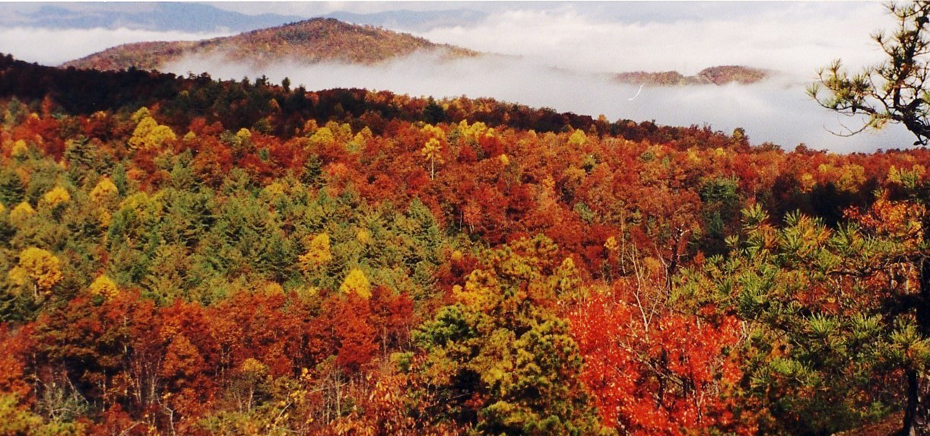
|
|
|
|
|
These words, in their broadest sense, have been used for eons as a call for escape. They have also been used as a seasonal cry by generations of those living in the hot, humid lowlands south of the Western North Carolina mountains when oppressive summer temperatures and humidity began their inexorable climb into the mountains. These lowlanders came by horseback and wagon to the foothills of the Appalachian Mountains. Travelers camped or stayed with local families who rented out rooms in their homes for much needed extra income. As roads improved, the more affluent lowlanders came by coach often staying for extended periods and hotels were built to accommodate this new type of visitor. They climbed the mountains to heights of 2,000 –
2,500 feet above sea level which offered cooler
temperatures and breathtaking views. But in the
distance the often unreachable peaks of the "real"
mountains beckoned The highest peaks in the
Appalachians cannot compete today with the Rocky
Mountains in the height category. People from the
western United States often refer to the Appalachian
Mountains as being just a bunch of hills compared to the
majesty of the Rocky Mountains.
With the passing of time, roads and transportation improved and the push was on to reach even loftier perches. Visitors could now view a world that seemed to go on forever from perches as high as 5,000 feet above sea level. To meet the increasing need to house these visitor's, small inns and b&bs sprang up and a new industry was born. In the late 1890's a new type of accommodation began to appear in the high mountains of Western North Carolina, Grand Manor Hotels built in the Victorian style architecture of the period. These huge rambling structures, with their rocking chair lined colonnaded porches overlooking the mountains offered every known amenity of the time. They attracted the rich and famous and the reputations of previously obscure towns and villages were made. Unfortunately most of the Grande Dames of the period, built entirely of wood, were eventually were destroyed by fire. One of them, the Green Park Inn, is still in operation in Blowing Rock the sister city of Boone. BuBuilt in 1891 at an elevation of 4,000 feet, the inn now fronts on a busy highway but is worth a visit to see what was once considered the height of luxury for the elite. An historical note: The Green Park Inn is built on the original site selected by the Greens, the first family to settle the area, for their homestead. The long summer sojourns in the cool mountains once enjoyed by the elite is a thing of the past for most. With interstate highways, fast transportation, and limited time, today's traveler prefers familiar look-alike chain motels and fast food restaurants.
The largest "metropolitan area" in the this part of
the mountains is the Town of Boone, North Carolina(as in
Daniel who reportedly sent 20 years in the area and
whose descendants still live there). It was
incorporated in 1872. Promoting itself as the "Heart of the High Country," Boone sits at 3,333 fight above sea level not far from the North Carolina border with eastern Tennessee. It is the preeminent commercial, academic, and cultural location of the area offering all of the modern conveniences one would expect from a town of its size. Almost every known fast food chain has a presence here and of course there is a Walmart. Choices for overnight and weekend stays are numerous. The heart of the city is Appalachian State University with a student population in excess of than 13,000. The college is home to major venues for art, music, and theatre. Visitors and seasonal residents can enjoy some of the cultural pleasures they might have left behind in the big cities. These ancient mountains are a 4-season destination for today's visitors. Outdoor activities are numerous. Using Boone as a base, visitors have a vast array of options from which to choose: hiking, mountain bike trails, fishing kayaking, rafting, skiing among others. Sightseeing is delightful on generally uncrowded roads.
Depart Boone's downtown and head out to the local
country roads. Elevations quickly climb to 4,500 and
higher. Views are spectacular. And then there are
the waterfalls and quaint mountain towns with antique
shops, local craft shops ,and unique local restaurants.
It's all an adventure. South of downtown is
the famous Grandfather Mountain, a World Heritage Site.
A suspension bridge at the summit between its top peaks
informs those who cross it that they are at 5,278 feet.
On the road up to the summit are a large visitor's center, rest stops, and the famous Forest Gump curve. The summit's peak replicates another more fragile world, an alpine environment with rare and endangered plant life, and then of course there is the unrivaled spectacular 360 degree views. The mountain is also famous for the many festivals and special events held throughout the year. Most are fun but some are punishing like the 5-mile race from the base parking lot straight up 1400 feet to the summit.
While the Appalachians cannot compare in grandeur with the Rockies, they more than make it up in sheer beauty with their lush forest covered slopes whose dress changes through 4-seasons. The famous Blue Ridge Parkway winds its way through this region.
In spring the budding trees display endless shades of green too numerous to count. Summertime offers a drive through what appears to be deep forest and there are frequent turnouts at scenic overlooks. Fall of course is the premier season with a pallet ofmagnificent colors that have to be appreciated in person. The vistas are just too vast and colors too intense for a photo to do it justice. Fall is also high season on the Parkway which means slow moving motorists and the bane of even slow moving drivers, the bicyclists. Fortunately there is no need for you to be subjected
to rush hour on the BRP. Take the next exit and
travel the back roads. Ramble through millions of acres
of hills and mountains festooned with color but without
the traffic. Your GPS will get you back safely.
Winter brings a dramatic change to the BRP. The old adage about not being able to see the forest for the trees has to be modified on the BRP. Here you can't see the mountains because of the forest. In winter leafless trees allow drivers a virtually unobstructed view of the normally obstructed peaks. The Town of Boone has plans to manage its future and prevent uncontrolled growth with an emphasis on preservation of natural resources in the surrounding areas. In the historic downtown area adjacent to the college, streets will be turned into pedestrian walkways with new shops and restaurants being added to showcase the past and encourage public utilization. Details and recommendations on specific locations or activities have purposely been omitted because the choices are many and your interests might be different from any I choose. I suggest you go to Boone area's website and request your copy of the Boone Area Visitor's Guide. It explains everything and armed with this information you might want to HEAD FOR THE HILLS.
|
Connect with us on:
American Roads and | ||||||||||||
|
Public Disclosure--
Please Read I recently learned of a FTC law requiring web sites to let their readers know if any of the stories are "sponsored" or compensated. American Roads and Global Highways' feature writers are professional travel writers. As such we are frequently invited on press trips, also called fam trips. Most of the articles here are results of these trips. On these trips most of our lodging, dining, admissions fees and often plane fare are covered by the city or firm hosting the trip. It is an opportunity to visit places we might not otherwise be able to visit and bring you a great story. However, no one tells us what to write about those places. All opinions are 100% those of the author of that feature column. |
|||||||||||||
|
Privacy Policy/ Archives /
Contributors /
Subscribe to
American Roads Books by
Kathleen Walls /
Contact /
Sponsor or Advertise/ American Roads & Global Highways Home Page
|







